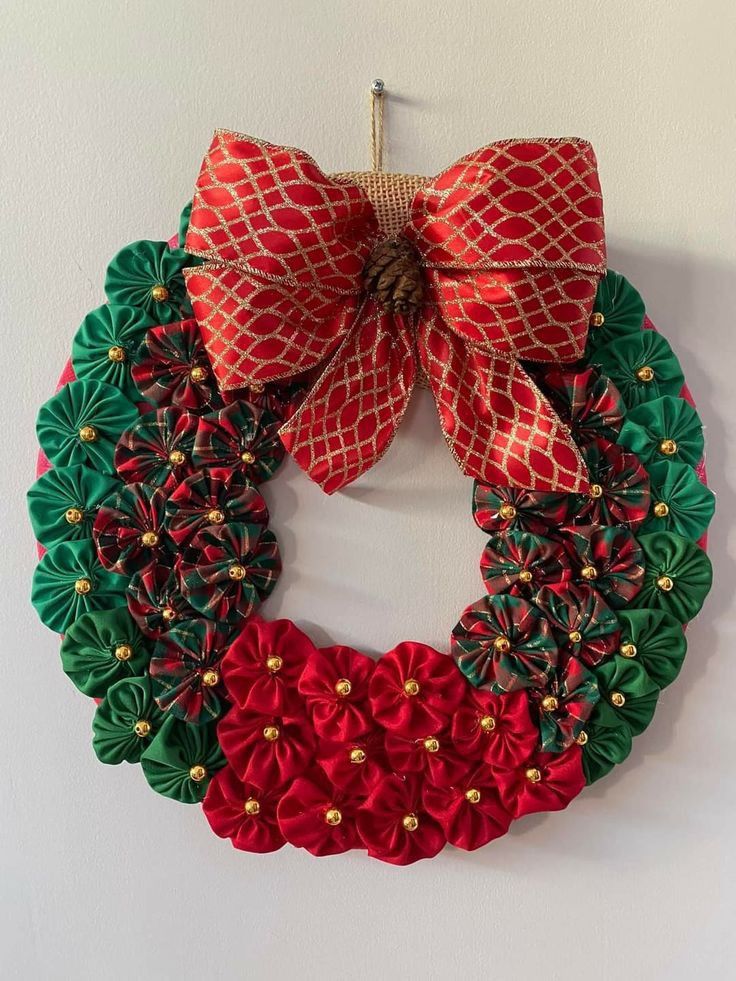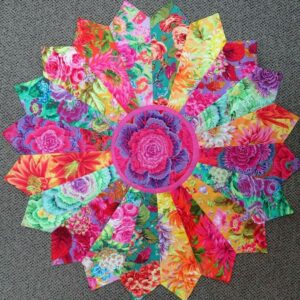
The Dresden Plate is one of the most iconic and recognizable quilt patterns in the quilting world. With its petal-like shapes arranged in a circle, forming a design reminiscent of flowers or rosettes, this pattern combines tradition and versatility, making it popular among both beginners and experienced quilters. Its aesthetic beauty, along with its rich history, makes the Dresden Plate a favorite for home decor projects, family quilts, and textile art pieces.
The Dresden Plate pattern dates back to the early 20th century and is a classic expression of American quilting style. Originally, women often used leftover fabric scraps from other projects to create colorful and visually striking floral designs. Today, the Dresden Plate is much more than just a way to use fabric remnants; it has become a symbol of creativity, patience, and craftsmanship, keeping quilting traditions alive while adapting to modern textile design trends.
Beyond its aesthetic appeal, the Dresden Plate offers a unique opportunity to explore color and texture combinations. Each petal can feature a different fabric, creating a vibrant and dynamic effect, or follow a harmonious color palette, conveying sophistication and elegance. This flexibility makes the pattern ideal for both focal pieces and full quilts.
The Dresden Plate emerged in the early 1900s in the United States, during a period when quilting was essential for creating functional and decorative quilts. Its name references the city of Dresden in Germany, renowned for its refined art and architecture. Some historians believe the pattern received its name due to the resemblance of quilt petals to floral ornaments and rosettes found in German Baroque art.
During the first decades of the 20th century, the Dresden Plate became especially popular among women who wanted to bring life to leftover fabric scraps from clothing and other sewing projects. The technique involved cutting petals in diamond or trapezoid shapes, sewing them into perfect circles, and applying them onto a solid background, producing a three-dimensional floral effect.
The innovation of the Dresden Plate lay not only in its design but also in its practical approach to using available materials. Creative quilters began experimenting with different color, texture, and fabric combinations, making each quilt unique. Over time, the pattern became an icon of American quilting, taught in craft magazines and passed down through generations of quilters.
Creating a high-quality Dresden Plate requires mastering several essential techniques. The first step is fabric selection: vibrant colors and well-balanced contrasts ensure that the pattern stands out. It is common to combine printed fabrics with solids to create visual depth.
Cutting the petals accurately is another crucial aspect. Traditionally, each petal is cut with precision, often using paper templates to guarantee uniformity. After cutting, petals are sewn by hand or machine to form a perfect circle. Some quilters add slight gathers at the base of each petal, adding texture and volume to the final piece.
Appliqué is the most common technique to attach the Dresden Plate to the quilt background. This can be done by hand using invisible stitches or by machine for durability and professional finish. The choice of background fabric also affects the final result: neutral backgrounds highlight colorful petals, while patterned backgrounds can create subtler artistic effects.
In addition to the traditional method, there are modern variations of the Dresden Plate. Some designers combine the pattern with embroidery, metallic fabrics, or three-dimensional elements, transforming the quilt into a true work of art. The technique can also be adapted for pillows, bags, and other decorative items, making the Dresden Plate both versatile and contemporary.
The key to a visually appealing Dresden Plate lies in color choices and harmony among elements. A classic approach is to use a complementary color palette, selecting colors opposite each other on the color wheel to create contrast. For example, shades of blue can be paired with oranges, producing a vibrant and dynamic effect.
Another strategy is to work with color gradation. By varying the intensity of a single hue, quilters can create depth and movement, making the Dresden Plate even more visually engaging. Fabrics with small prints or subtle textures can be combined with solids to ensure the pattern stands out without appearing chaotic.
For modern projects, quilters can explore unconventional combinations such as metallics, neon fabrics, or geometric patterns. Creativity is limitless, and the Dresden Plate serves as a perfect canvas for artistic experimentation. Additionally, experimenting with the size of petals and the number of segments in the circle allows quilters to create unique designs, adapting the pattern to personal style.

Today, the Dresden Plate is widely used in contemporary quilting projects. It can appear in full-sized quilts, smaller pieces like pillows and throws, or even in fashion accessories and home decor. Its versatility allows it to fit both traditional and modern, minimalist designs.
Beyond its aesthetic function, the Dresden Plate also carries significant emotional value. Many families preserve quilts featuring this pattern as heirlooms, keeping alive the memories of generations who practiced the art of quilting. This combination of tradition, beauty, and history makes the Dresden Plate a timeless choice for any quilter.
With the growing popularity of modern quilting, the Dresden Plate continues to inspire textile artists to innovate, preserving a century-old tradition while exploring new design possibilities. Whether in vibrant colors, sophisticated prints, or unexpected combinations, the Dresden Plate remains a symbol of creativity, skill, and enduring beauty.
step by step Dresden Plate
The Dresden Plate is more than just a quilt pattern; it is an expression of art, history, and technique. From its practical origins to modern interpretations, it continues to captivate quilters and craft enthusiasts worldwide. Every cut and sewn petal is a testament to patience, creativity, and the passion for creating something beautiful and lasting.